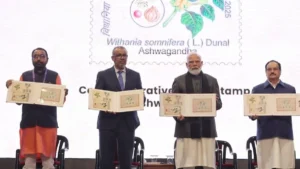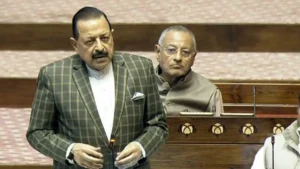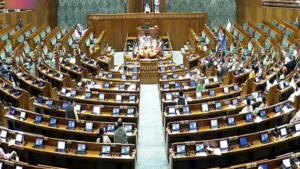Independence Day in India, celebrated annually on August 15, marks a pivotal moment in the nation’s history: the end of British colonial rule in 1947. This day not only commemorates India’s freedom but also serves as a tribute to the struggles and sacrifices made by countless individuals who fought for the nation’s liberation. From its historical roots to its modern-day celebrations, Independence Day remains a symbol of national pride and unity.
Independence Day: Historical Background
The quest for Indian independence began in earnest in the late 19th and early 20th centuries, as the Indian freedom struggle gained momentum. The formation of key organizations like the Indian National Congress in 1885 and the subsequent rise of leaders such as Mahatma Gandhi, Jawaharlal Nehru, and Subhas Chandra Bose played a crucial role in shaping the movement. Through peaceful protests, civil disobedience, and relentless advocacy, these leaders galvanized millions of Indians to demand freedom from colonial oppression.
August 15, 1947, was the culmination of these efforts when India achieved independence from British rule. The day was marked by a transfer of power from the British Raj to the newly formed Indian government, led by Jawaharlal Nehru, who became the first Prime Minister of independent India.
Independence Day: Iconic Moments
Several iconic moments have defined Independence Day celebrations throughout India’s history:
- The First Flag Hoisting (1947): On August 15, 1947, Jawaharlal Nehru hoisted the Indian tricolor at the Red Fort in Delhi, marking the symbolic end of British rule and the beginning of a new era. This moment is etched in history as the inception of independent India.
- The Midnight Speech: Nehru’s famous “Tryst with Destiny” speech, delivered at midnight on August 14-15, 1947, is one of the most memorable speeches in Indian history. It articulated the hopes and aspirations of a newly liberated nation.
- The Kargil Conflict (1999): The Kargil War, fought between India and Pakistan, is another significant moment associated with Independence Day. The victory in Kargil was celebrated on Independence Day, symbolizing India’s resilience and military prowess.
Independence Day: Modern-Day Celebrations
Independence Day in contemporary India is marked by a blend of traditional ceremonies and modern-day festivities. The celebrations typically include:
-
Flag Hoisting and Ceremonies: The day begins with flag hoisting ceremonies at schools, government offices, and public places. The Prime Minister addresses the nation from the Red Fort, delivering a speech that highlights the country’s achievements and future goals. The President also delivers a speech, usually in the morning, reflecting on national achievements and aspirations.
- Cultural Programs: Various cultural programs are organized across the country, showcasing India’s rich heritage through dance, music, and drama. Schools and colleges often hold patriotic events, including performances of national songs and skits.
-
Parades and Marches: Major cities, including Delhi, Mumbai, and Chennai, witness grand parades featuring military displays, traditional dances, and tableaux representing different states and cultural aspects of India.
-
Flag-Related Activities: The tricolor flag is prominently displayed on buildings, homes, and vehicles. People also engage in activities such as decorating their homes with flags and participating in community events that promote national unity and pride.
-
Media and Entertainment: Television channels and online platforms broadcast special programs, documentaries, and films related to India’s freedom struggle. These broadcasts often include interviews with freedom fighters, historical documentaries, and patriotic songs.
Independence Day: President’s Speech
On Independence Day, the President of India delivers a speech from the Red Fort in Delhi. The President’s speech typically covers:
- National Achievements: A summary of the country’s progress in various sectors, including economic development, infrastructure, and social welfare.
- Challenges and Goals: An acknowledgment of ongoing challenges such as poverty, inequality, and security issues, along with a call for collective efforts to address these issues.
- Tribute to Freedom Fighters: A tribute to the contributions of freedom fighters and leaders who played a significant role in achieving independence.
Independence Day: Prime Minister’s Speech
The Prime Minister’s speech, delivered from the Red Fort, is a central part of Independence Day celebrations and often includes:
- Reflection on the Nation’s Journey: A look back at the nation’s progress since independence, highlighting key achievements and milestones.
- Emphasis on Unity and Diversity: An appeal for national unity and a celebration of India’s cultural and social diversity.
- Future Vision: An outline of future goals and aspirations for the country, focusing on economic growth, technological advancements, and social reforms.
- Encouragement and Inspiration: Motivating citizens to contribute positively to the nation’s development and uphold the values of democracy and freedom.
Independence Day: Social and Political Reflections
Modern Independence Day celebrations also reflect on India’s progress and challenges. The speeches and discussions on this day often address issues such as economic development, social justice, and national security. It is a time for reflection on the nation’s achievements and a renewed commitment to addressing ongoing challenges.




 Prime Minister Releases Commemorative Po...
Prime Minister Releases Commemorative Po...
 Parliament Passes SHANTI Bill, AERB Gets...
Parliament Passes SHANTI Bill, AERB Gets...
 Viksit Bharat G RAM G Bill Passed in Lo...
Viksit Bharat G RAM G Bill Passed in Lo...







